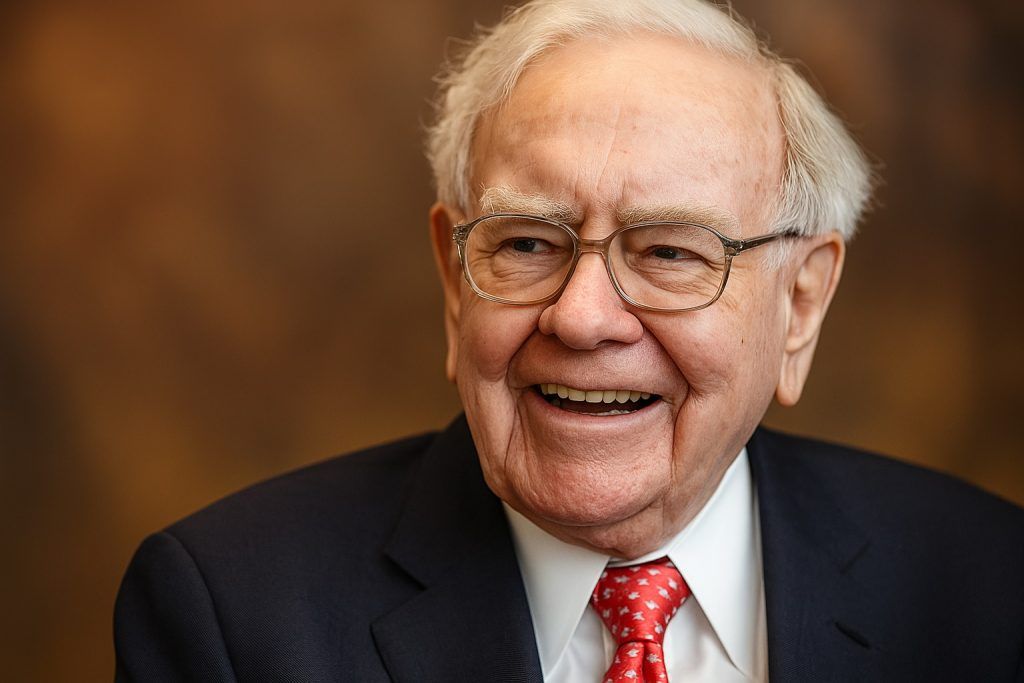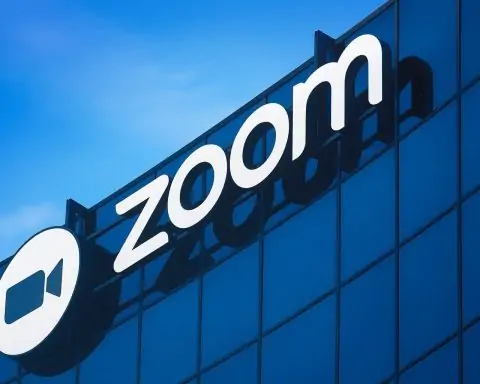Microsoft stock is starting the new week in consolidation mode after a volatile stretch for AI names, with big headlines today around Bill Gates’ foundation slashing its Microsoft stake, fresh political pressure on AI chip exports, and a key dividend/ex‑dividend catalyst later this week.
Below is a news-style roundup of everything that matters for Microsoft (MSFT) on Monday, 17 November 2025.
1. Price snapshot: Microsoft hovers around $510
As of late morning U.S. trading on 17 November 2025, Microsoft shares are trading around $510 per share, roughly in line with Friday’s official close of $510.18. [1]
Key context:
- Today’s intraday range so far is roughly $497–$512, according to real‑time quote aggregators. [2]
- Over the past year, MSFT has traded between about $344.79 (52‑week low) and $555.45 (52‑week high). [3]
- At current levels, Microsoft’s market capitalization is around $3.8 trillion and its trailing P/E is about 36x, placing it firmly in “premium large‑cap growth” territory. [4]
After an AI‑driven rally that briefly pushed Microsoft into the $4 trillion club earlier this year, the stock has pulled back from its highs. Recent selling across AI leaders even had Microsoft on track for its longest losing streak in a decade last week, wiping out roughly $350 billion in market value at one point as investors rotated out of expensive AI names. [5]
Today’s tone is calmer: MSFT is essentially flat versus Friday, with traders weighing fresh headlines against a backdrop of strong fundamentals and still‑elevated valuations.
2. Biggest talking point: Gates Foundation cuts Microsoft stake by ~65%
The headline driving the most chatter around Microsoft today is Bill & Melinda Gates Foundation Trust’s massive sale of Microsoft shares.
What happened
Regulatory filings and follow‑up coverage show that the Gates Foundation Trust sold about 17 million Microsoft shares in Q3 2025, reducing its stake by nearly 65%. [6]
- The sale is valued around $8.7–$8.8 billion, using an average price close to $510 per share. [7]
- The trust’s Microsoft position fell from over 27% of its portfolio to about 13%, leaving it with roughly 9.2 million shares still worth around $4.8 billion at current prices. [8]
Some outlets framed the move as the foundation “losing majority status” in Microsoft, but this is a bit misleading: the trust was never a majority owner of Microsoft the company. Instead, its Microsoft holding went from being clearly dominant inside its own portfolio to a smaller, though still very large, position.
Why it matters (and why it might not)
The foundation has long signaled that Bill Gates intends to donate roughly 99% of his wealth, and the trust recently outlined plans to increase annual distributions to about $9 billion, which requires freeing up liquidity across its portfolio. [9]
GuruFocus and other analysts characterize the Microsoft sale as:
- A portfolio and liquidity management decision, not a vote of no confidence in Microsoft’s business. [10]
- Part of a broader effort to fund growing philanthropic commitments rather than to time the stock.
Still, the sheer size of the reduction is psychologically important. For many investors, “Bill Gates = Microsoft” is still an emotional shorthand, so any large sale can trigger knee‑jerk questions about whether insiders see limited upside from here.
3. Institutional flows: Not just selling – some funds are adding
The Gates Foundation cut is happening alongside a flurry of 13F filings showing how other large investors are repositioning around Microsoft.
Mixed but net constructive institutional moves
Recent MarketBeat summaries of SEC filings highlight that: [11]
- Mutual of America Capital Management LLC trimmed its MSFT stake by 1.5% in Q2, but still owns ~883,000 shares worth about $440 million, making Microsoft its second‑largest position at 4.7% of its portfolio.
- Quotient Wealth Partners LLC increased its Microsoft holding by 8.1% to about 34,600 shares, worth roughly $17.2 million, making MSFT its 24th‑largest position.
- Other wealth managers and RIAs reported smaller incremental buys or sells, but overall institutional ownership remains above 70% of the float.
Separate filings today also note that smaller firms like Schubert & Co and Signature Estate & Investment Advisors LLC adjusted their Microsoft exposure, with some modestly reducing and others maintaining or adding to positions. [12]
Peter Thiel rotates out of Nvidia, into Microsoft
In another closely watched move, Peter Thiel’s investment firm, Thiel Macro LLC, has fully exited Nvidia and shifted focus toward Microsoft and Apple, while also sharply cutting its Tesla holding. [13]
Thiel has publicly warned that AI valuations may be running ahead of economic reality, and the portfolio shift is being interpreted as:
- A bet on software and platform companies (like Microsoft and Apple) creating more durable long‑term value
- A signal of caution toward high‑valuation chip makers, even as AI demand remains strong
Taken together, today’s flows paint a nuanced picture: some legacy, philanthropy‑driven holders are cashing out, but major institutions and certain hedge funds are still comfortable adding or maintaining exposure at current levels.
4. Policy risk front and center: Microsoft backs AI chip export curbs
Another key theme today is Microsoft’s stance on U.S. export controls for advanced AI chips.
Backing the GAIN AI Act
Multiple reports over the past few days confirm that Microsoft and Amazon are backing the proposed “GAIN AI Act”, a piece of U.S. legislation that would:
- Tighten restrictions on exporting high‑end AI accelerators to China and other arms‑embargoed countries
- Prioritize U.S. domestic orders for those chips before foreign customers
- Potentially be attached to the broader National Defense Authorization Act currently being debated in Congress [14]
This puts Microsoft on the opposite side of key supplier Nvidia, which has lobbied against such curbs, arguing they would distort the semiconductor market and hurt U.S. competitiveness. [15]
Why investors care
For Microsoft shareholders, this matters for several reasons:
- Supply security
- By backing the GAIN AI Act, Microsoft is effectively signaling it wants priority access to scarce cutting‑edge AI chips for its own Azure data centers.
- In a world where AI compute is the new oil, guaranteed supply can be a competitive edge, even if total global chip volume shrinks.
- Regulatory alignment
- Supporting national‑security‑driven export controls can be read as staying in Washington’s good graces, which is important as regulators scrutinize Big Tech’s AI power.
- Sector volatility
- The export debate has contributed to sharp swings across AI‑sensitive stocks over the last week, with reports suggesting more than $700 billion in tech market cap was erased during one particularly rough session. [16]
- Microsoft, while less directly exposed than Nvidia, still gets dragged around in these macro AI trades.
Today, investors appear to be digesting these policy headlines rather than reacting dramatically to them, with MSFT trading mostly sideways.
5. The AI spending squeeze: Liquidity vs. growth
Under the surface, one of the biggest medium‑term debates around Microsoft has nothing to do with Gates’ selling or chip policy. It’s about how much cash the company is pouring into AI infrastructure.
Record capex and a tighter cash position
Recent analyses from Reuters and GuruFocus highlight that: [17]
- Microsoft’s fiscal Q1 2026 (reported 29 October) delivered revenue of around $77.7 billion (+18% year‑on‑year) and EPS of about $4.13, beating Wall Street expectations.
- At the same time, Microsoft’s AI and cloud capex has exploded, with a single quarter of spending pushing toward $30–35 billion, and management guiding to even higher capex over the coming year.
- Across Microsoft, Alphabet and Amazon, AI infrastructure investments since 2023 are now estimated above $600 billion, with forecasts suggesting as much as $1 trillion could be deployed by the end of next year. [18]
- Microsoft’s cash and short‑term investments have fallen from about 43% of total assets in 2020 to just 16% now, reflecting how much capital is being tied up in data centers and hardware. [19]
Financially, Microsoft still looks very strong:
- Operating margin north of 40%
- Net margin around 35%
- Debt‑to‑equity of roughly 0.17 and current ratio around 1.35, pointing to conservative leverage and solid near‑term liquidity [20]
But the trade‑off is clear: free cash flow is under pressure, and the stock now trades at rich multiples (P/E >36, P/S ~13, P/B >10) that assume AI investments will translate into durable, high‑margin growth. [21]
This is the core of today’s debate: Is Microsoft’s AI super‑cycle a value‑creation machine – or a capital‑intensive treadmill? So far, the market seems willing to give the company the benefit of the doubt, but the tolerance for any missteps is low.
6. AI narrative and risk: Suleyman calls superintelligence an “anti‑goal”
On the softer side of the AI story, Microsoft’s AI CEO, Mustafa Suleyman, is making waves with a notably cautious take on “godlike” AI.
In a new interview highlighted by Business Insider today, Suleyman said that artificial superintelligence – AI far beyond human capabilities – should be considered an “anti‑goal,” not a positive vision of the future. [22]
Key points from his comments:
- Microsoft’s AI effort is aiming for “humanist superintelligence” – systems that are powerful but explicitly designed to support human interests.
- Suleyman argued that granting AI consciousness or moral status is a mistake, stressing that these systems “don’t suffer” and “don’t feel pain”; they are sophisticated pattern‑matching tools.
- His remarks contrast with some tech leaders’ aggressive timelines for AGI (artificial general intelligence) and superintelligence later this decade.
For investors, this matters less for today’s price and more for regulatory and reputational risk:
- A cautious, safety‑first narrative could help Microsoft navigate future AI rules, especially in the EU and U.S.
- It may also temper the most speculative expectations about runaway AGI profits, keeping the focus on more realistic, incremental gains from Copilot, Azure AI, and enterprise automation.
7. Upcoming catalysts: Ignite conference and ex‑dividend date
Today is also the pre‑game show for a busy Microsoft week.
Microsoft Ignite 2025 (Nov 18–21, with pre‑day on Nov 17)
According to Microsoft and event guides, Microsoft Ignite 2025 runs 18–21 November in San Francisco, with pre‑day sessions on Monday, 17 November. [23]
Investors and partners are watching for:
- Copilot upgrades and deeper integration into Microsoft 365, Windows and security tools
- Azure AI platform announcements, including new models and infrastructure features
- Updates on Microsoft’s “Secure Future Initiative” and its efforts to harden security after several high‑profile outages and vulnerabilities ts2.tech+1
Given how tightly Microsoft’s valuation is tied to AI, any blockbuster Ignite announcements or missteps could move the stock later this week, even if today’s price action is quiet.
Dividend and ex‑dividend timing
Microsoft also has a dividend catalyst on deck:
- The board recently raised the quarterly dividend to $0.91 per share, up from $0.83. [24]
- The ex‑dividend date is Thursday, 20 November 2025, with the dividend payable on 11 December 2025. [25]
- At current prices, the dividend yield is around 0.7% – modest, but backed by a long record of steady increases. [26]
Short‑term traders sometimes position around the ex‑div date, and the stock will typically adjust lower by roughly the dividend amount on that day in purely mechanical terms.
8. Analyst sentiment and short‑term technical view
Despite the volatility and the capex worries, Wall Street remains firmly bullish on Microsoft.
- 32–35 sell‑side analysts currently rate MSFT a “Strong Buy”, with average 12‑month price targets clustering around $630–$633 per share – implying roughly 20–25% upside from the $510 region. [27]
- High‑end targets run as far as $675–$700, while the most cautious recent targets still sit well above $540. [28]
On the quantitative/technical side:
- Short‑term services like StockInvest.us recently upgraded Microsoft from “Hold” to a “Buy candidate”, noting a generally positive trend with support in the low‑500s and an estimated “fair opening price” for today near $506.40. [29]
- Short‑horizon forecasts from CoinCodex point to Microsoft drifting toward the $512–$516 range over the next several days, essentially a call for modest gains rather than big swings. [30]
Of course, these models are not guarantees and should be treated as sentiment gauges rather than trading instructions, but they show that the systematic side of the market is still leaning mildly bullish on MSFT.
9. How Microsoft stock is set up today
Putting all of today’s moving pieces together, Microsoft’s 17 November 2025 setup looks like this:
Positives
- Strong fundamentals: Double‑digit revenue growth, expanding cloud and AI margins, and robust profitability metrics. [31]
- Powerful AI and cloud positioning: Azure, Copilot and global data‑center build‑outs (including large new projects in Europe and Asia) keep Microsoft at the center of the AI race. ts2.tech+2euronews.com+2
- Supportive Wall Street view: Broad “Strong Buy” consensus and price targets pointing to meaningful upside from current levels. [32]
- Select hedge funds rotating in: Thiel Macro and others adding or initiating positions as they rotate away from more speculative AI plays. [33]
Risks and overhangs
- AI capex and liquidity strain: Massive infrastructure spending is compressing free cash flow and lowering balance‑sheet cash ratios, even if earnings remain strong. [34]
- Rich valuation: Microsoft is priced as if its AI and cloud bets will continue to pay off with few missteps, leaving limited margin for error. [35]
- Policy and geopolitical risk: The GAIN AI Act and broader U.S.–China tech tensions could reshape AI chip supply and costs over time. [36]
- Optics of insider and foundation selling: Although the Gates Foundation’s sales look philanthropy‑driven, they may still reinforce the narrative that some legacy holders are taking money off the table after a huge run. [37]
For now, the market seems to view today’s Gates Foundation headlines and policy noise as background music rather than a thesis‑changing event, with Microsoft stock quietly holding the line near $510 ahead of Ignite announcements and the ex‑dividend date later this week.
Key things to watch for the rest of today and this week
- Any early product teases or leaks out of Ignite pre‑day sessions that hint at big Copilot, Windows, or Azure AI upgrades
- Follow‑up commentary on the GAIN AI Act and whether more tech firms align with Microsoft’s stance
- Further analysis of large 13F filings, especially if other mega‑funds substantially increase or decrease MSFT exposure
- Short‑term trading around Thursday’s ex‑dividend date, which can amplify volume and intraday swings
References
1. appreciatewealth.com, 2. www.investing.com, 3. www.marketbeat.com, 4. www.marketbeat.com, 5. m.economictimes.com, 6. www.gurufocus.com, 7. www.gurufocus.com, 8. www.gurufocus.com, 9. www.gurufocus.com, 10. www.gurufocus.com, 11. www.marketbeat.com, 12. www.marketbeat.com, 13. www.gurufocus.com, 14. www.benzinga.com, 15. www.benzinga.com, 16. intellectia.ai, 17. www.reuters.com, 18. www.gurufocus.com, 19. www.gurufocus.com, 20. www.gurufocus.com, 21. www.gurufocus.com, 22. www.businessinsider.com, 23. ts2.tech, 24. www.marketbeat.com, 25. www.marketbeat.com, 26. www.marketbeat.com, 27. stockanalysis.com, 28. stockanalysis.com, 29. stockinvest.us, 30. coincodex.com, 31. www.alphaspread.com, 32. stockanalysis.com, 33. www.gurufocus.com, 34. www.gurufocus.com, 35. www.gurufocus.com, 36. www.benzinga.com, 37. www.gurufocus.com








